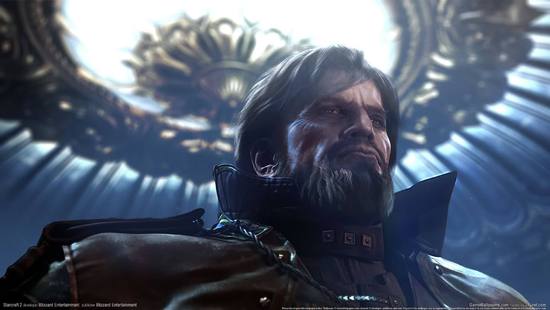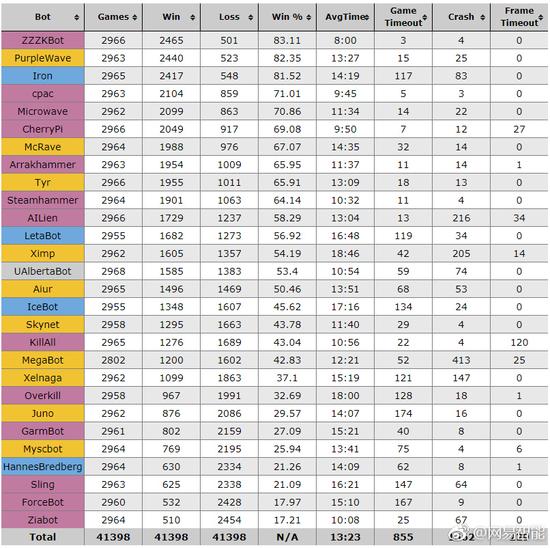
This article is produced by NetEase Smart Studio (public account: smartman163). Stay tuned for the latest in AI and the next big era!
NetEase Smart News, October 11 – In the final week of the 2017 StarCraft AI competition last night, Facebook quietly entered a robot named “CherryPi,†which placed sixth. The robot was developed by the artificial intelligence research team at Facebook’s lab, consisting of eight researchers.
The growing competition in social networks highlights how seriously Facebook is taking its rivalry with companies like Google. It's also showing its commitment to setting new milestones in the field of artificial intelligence. Google's DeepMind, based in London, made headlines last year after its AlphaGo software defeated a top human player in Go. This year, in August, DeepMind set its sights on the latest version of StarCraft 2.
Although Facebook participated in this competition using an older version of StarCraft, it remains just as challenging for AI systems. Facebook's AI research team has 80 researchers listed on their website, led by Yann LeCun, a professor at New York University. While they have published numerous papers, they haven't achieved the same level of recognition as Google. Facebook released three research papers on interstellar domination but didn’t announce any major efforts to dominate the game.
The final results announced on Sunday showed that Facebook still has a long way to go—CherryPi placed sixth out of 28 competitors, while the top three were all developed by independent programmers.

The 2017 StarCraft AI Competition rankings (top 8) are as follows:
1. ZZZKBot – Developed by Australian programmer Chris Coxe
2. PurpleWave – Developed by US software engineer Dan Gant
3. Iron – Developed by French programmer Igor Dimitrijevic
4. cpac – R&D team from the CAS Institute of Automation
5. Microwave – Developed by Micky Holdorf
6. CherryPi – Facebook AI Research Lab
7. McRave – Developed by Christian McCrave
8. Arrakhammer – Stanford University AI Research Team
StarCraft AI Contest: Sponsored by AIIDE Conference (AI for Interactive Digital Entertainment), one of the three major Star AI games (including AIIDE, CIG, and SSCAIT). The competition aims to promote and evaluate real-time strategy games (RTS) for artificial intelligence. A total of 28 teams participated, 15 of which were independent. Most of the participants were AI research teams affiliated with universities. DeepMind, the AI company owned by Google (creator of AlphaGo), did not take part in the contest. (Source: Internet consolidation)
Follow the NetEase Smart public account (smartman163) for the latest updates on the AI industry.
N-Type Monocrystalline refers to the type of solar cell material used. Monocrystalline cells are made from a single crystal of silicon, which gives them higher efficiency than polycrystalline cells. The 'N-Type' signifies that the cell has an N-type semiconductor material, typically composed of silicon doped with phosphorus. This doping process creates an abundance of free electrons, which are crucial for the generation of electricity.
Features
1. Higher Efficiency: TOPCon technology can achieve efficiencies up to 24-25%, which is higher than most conventional mono-Si cells. This high efficiency translates into more power output per unit area, making them ideal for space-constrained applications.
2. Better Light Absorption: monocrystalline silicon solar panels are known for their ability to absorb light more effectively due to the absence of impurities in the material. This results in better performance under low-light conditions and during night times when solar irradiance is low.
3. Reduced Temperature Coefficient: As temperatures rise, the efficiency of solar cell panels typically decreases. TOPCon cells have a lower temperature coefficient, meaning they maintain their efficiency better at higher temperatures, thus delivering more consistent performance across various environmental conditions.
4. Durability and Reliability: The design of TOPCon cells allows for better thermal management and durability, ensuring they can withstand harsh environmental conditions while maintaining high performance levels over extended periods.
5. Cost-Effective Manufacturing: While introducing advanced features, TOPCon technology maintains a competitive cost structure, making it economically viable for mass production and deployment in large-scale solar power plants.
6. Flexibility in Design: The process is compatible with existing manufacturing lines, allowing for easy integration into current semiconductor fabrication processes without significant capital investment.
To summarize, the utilization of TOPCon N-Type monocrystalline solar panels spans across multiple industries, serving as an environmentally friendly answer to the escalating need for renewable energy sources. These panels significantly boost the efficacy and operational capabilities of solar power systems, thereby playing a pivotal role in advancing sustainable energy solutions.
TOPCon N Type Mono Solar Cells,Mono Crystalline Panel,Monocrystalline Solar Cells 700W,Mono N Type Solar Cell
Ningbo Taiye Technology Co., Ltd. , https://www.tysolarpower.com
